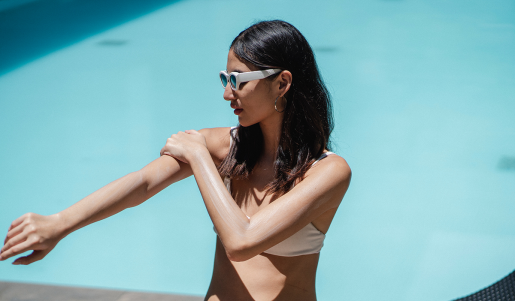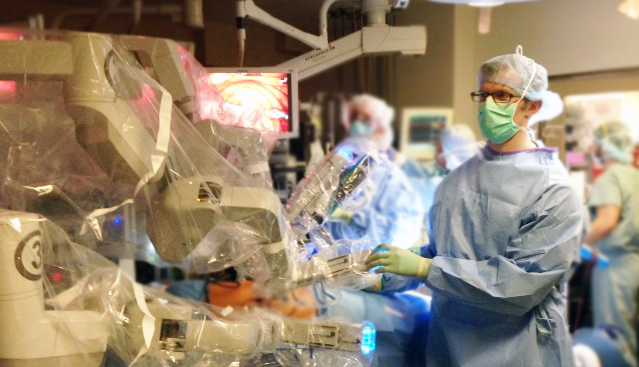Don’t bake your tan, fake it
Many people enjoy relaxing by the pool or on the beach to catch a few rays during the dog days of summer. And while they may prefer the way their skin looks with a “tan,” it’s actually a sign of skin damage. Dr. Ida Orengo, professor and medical director of dermatology at Baylor College of Medicine, separates fact from fiction regarding tans and offers some safe options to achieve a summer glow.
 When lying out in the sun, it is the skin’s natural self-preservation that gives skin a golden hue. “The ultraviolet light hits the skin and causes damage to the DNA of the cells that make up the skin,” Orengo explains. “The skin will then make more melanin that will absorb the UV light to try to protect itself, resulting in a tan.”
When lying out in the sun, it is the skin’s natural self-preservation that gives skin a golden hue. “The ultraviolet light hits the skin and causes damage to the DNA of the cells that make up the skin,” Orengo explains. “The skin will then make more melanin that will absorb the UV light to try to protect itself, resulting in a tan.”
The immune system does try to repair the sun damage, but age can play a role in how successful the immune system is. “As we get older, our immune system isn’t as strong as it once was and that’s when skin cancers start to pop up,” Orengo said.
Sun damage is cumulative and can impact your chances of developing skin cancer. According to the Skin Cancer Foundation, even one blistering sunburn in childhood or adolescence more than doubles your chances of developing melanoma later in life. Skin damage builds up over time starting with your very first sunburn. The more you burn, the greater your risk of skin cancer.
You can help give your skin a fighting chance by protecting it with these tips:
- Avoid being outside when the sun is at its strongest (from 10 a.m. to 4 p.m.)
- Wear sunscreen of at least SPF 30 and reapply every two hours/after getting wet
- Wear protective clothing made from tightly woven materials
- Wash your clothes in SPF detergents to add protection for the season
- Take supplements like nicotinamide to protect your skin from the inside
Indoor tanning beds are just as deadly with more than 419,000 cases of skin cancer in the U.S. each year linked to indoor tanning. “The biggest problem with tanning booths is the damage to the skin with the ultraviolet A (UVA) light,” she said. UVA penetrates the skin more deeply than ultraviolet B (UVB) light, causing more damage to the cells in the dermis, which leads to more wrinkles and as well as causing skin cancer.
“People tend to get more UVA exposure in the tanning booths because they don’t use any sun protection, and they get exposure in areas that wouldn’t normally be exposed at the beach.” Orgengo said. “Unfortunately, these ‘tanning booth tans’ don’t protect your skin from further damage from skin cancer, nor do they give you more vitamin D as they claim.”
If you want to add some color, Dr. Orengo suggests using a safe alternative like an at-home sunless tanning cream. “You’re going to want to exfoliate beforehand so you don’t get patches,” Orengo said. “Then put the self-tanner on, making sure to rub it in well.”
Learn about Baylor Medicine Dermatology services.
-By Anna Kiappes



